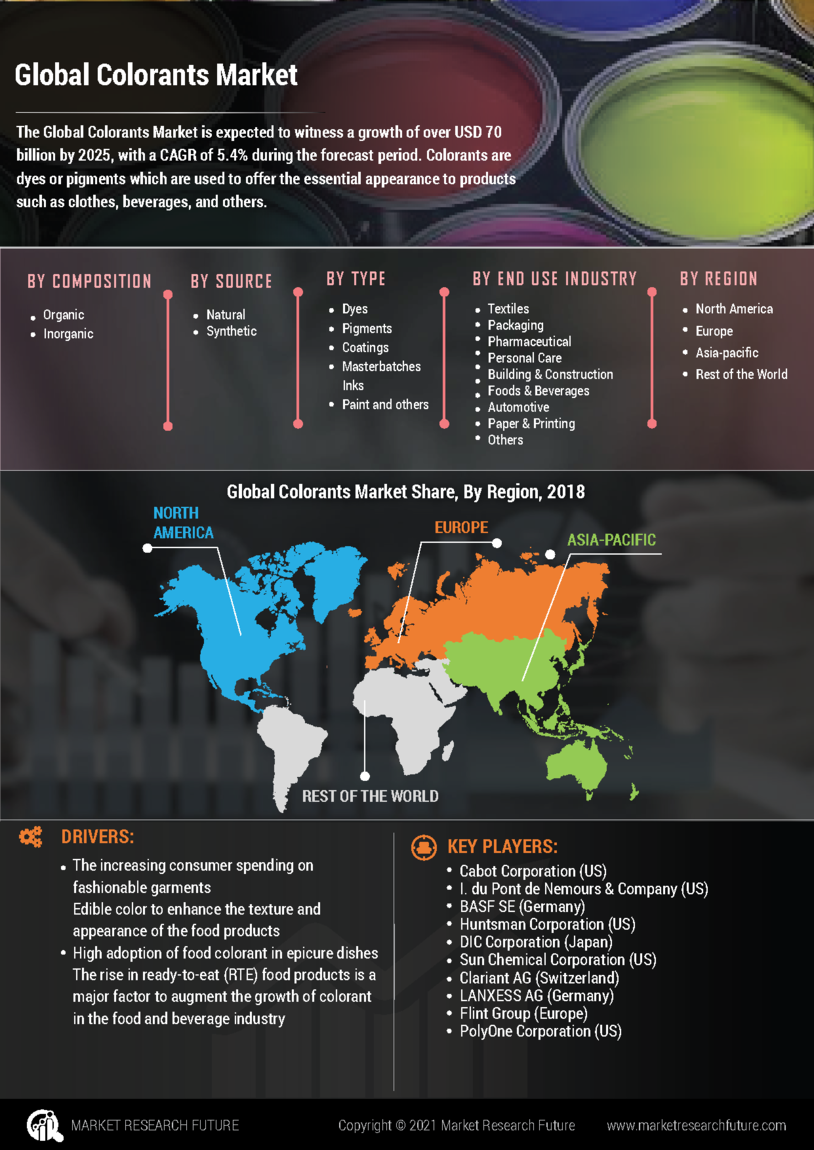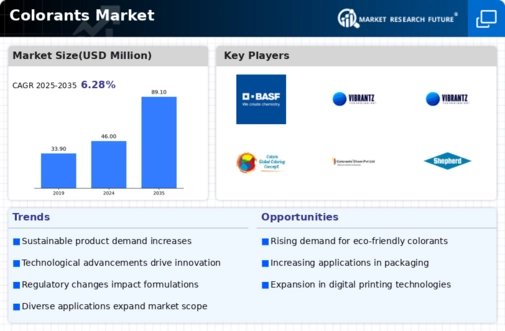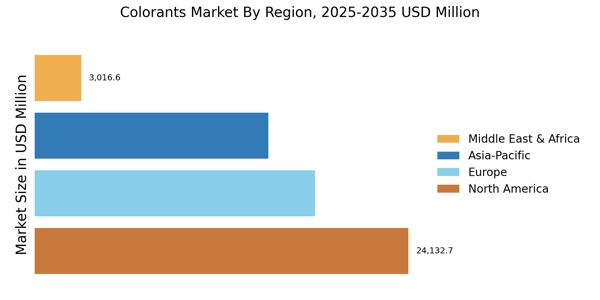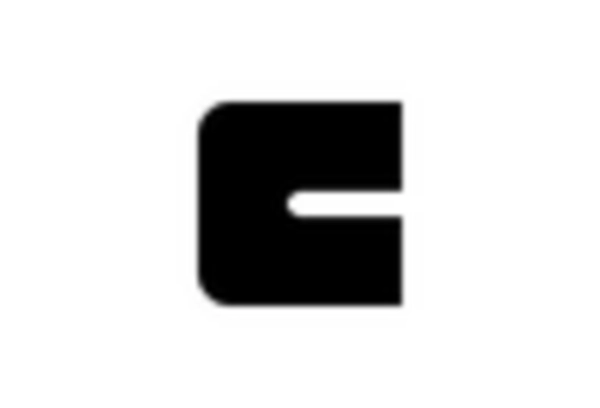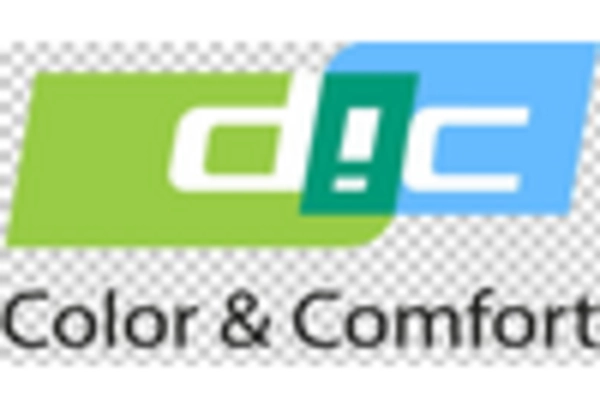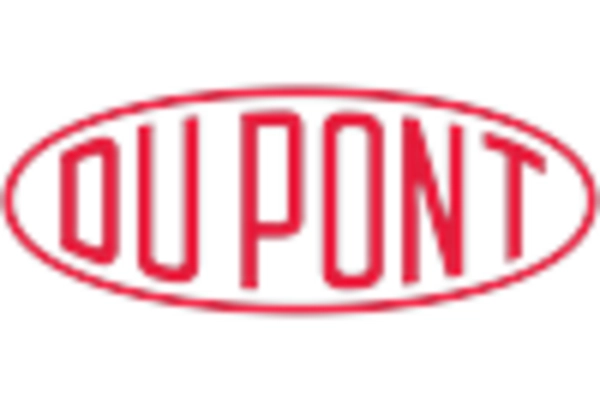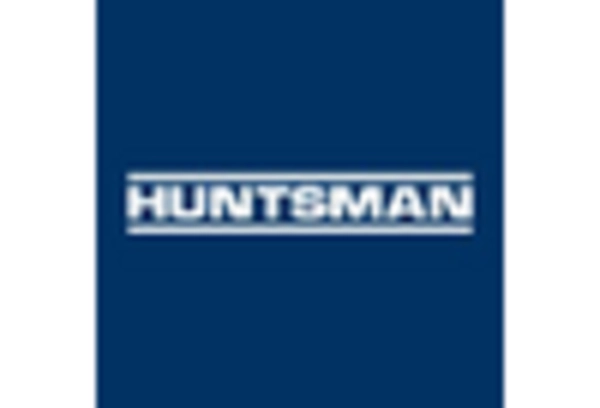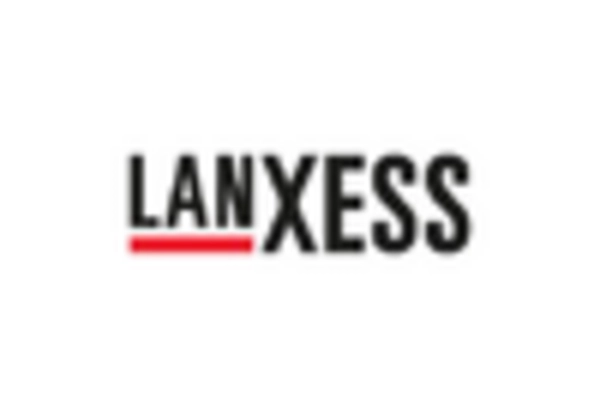Emerging Markets
Emerging markets present a substantial opportunity for growth within the Colorants Market. As economies develop, there is a rising demand for colorants across various sectors, including construction, automotive, and consumer goods. The expansion of the middle class in these regions is driving consumption patterns that favor vibrant and diverse color options. Market projections indicate that the demand for colorants in emerging markets could increase by approximately 7% annually over the next five years. Companies that strategically invest in these regions may benefit from first-mover advantages, establishing strong market presence and brand recognition in the Colorants Market.
Regulatory Compliance
Regulatory compliance is a critical driver in the Colorants Market, as governments worldwide impose stringent regulations on the use of colorants in various applications. This is particularly relevant in sectors such as food and cosmetics, where safety and health standards are paramount. Manufacturers must navigate complex regulatory landscapes to ensure their products meet safety requirements, which can influence formulation choices and sourcing strategies. The increasing focus on consumer safety is prompting companies to invest in compliance measures, which may lead to higher operational costs. However, adherence to regulations can also enhance brand trust and consumer loyalty, positioning compliant companies favorably in the Colorants Market.
Technological Innovations
Technological innovations are reshaping the Colorants Market, driving efficiency and enhancing product offerings. Advances in colorant formulation and application techniques have led to the development of more vibrant and durable colors. Innovations such as digital printing technology are enabling manufacturers to produce intricate designs with precision, thereby expanding creative possibilities. Furthermore, the integration of artificial intelligence in color matching processes is streamlining production and reducing waste. Market analysis suggests that the adoption of these technologies could lead to a reduction in production costs by up to 15%. As companies leverage these advancements, they are likely to enhance their competitive positioning within the Colorants Market.
Sustainability Initiatives
The Colorants Market is increasingly influenced by sustainability initiatives. As consumers become more environmentally conscious, manufacturers are compelled to adopt eco-friendly practices. This shift is evident in the rising demand for natural and organic colorants, which are perceived as safer alternatives to synthetic options. According to recent data, the market for natural colorants is projected to grow at a compound annual growth rate of approximately 5.5% over the next few years. Companies that prioritize sustainable sourcing and production methods are likely to gain a competitive edge, as they align with consumer preferences for products that minimize environmental impact. This trend not only enhances brand reputation but also opens new avenues for innovation within the Colorants Market.
Customization and Personalization
Customization and personalization are becoming pivotal drivers in the Colorants Market. As industries such as cosmetics, food, and textiles evolve, the demand for tailored color solutions is on the rise. Consumers increasingly seek products that reflect their individual preferences, prompting manufacturers to develop bespoke color formulations. This trend is particularly pronounced in the cosmetics sector, where personalized shades and finishes are gaining traction. Market data indicates that the customization segment is expected to witness a growth rate of around 6% annually. Companies that can effectively respond to this demand for unique color solutions are likely to thrive, as they cater to the evolving tastes of consumers in the Colorants Market.
